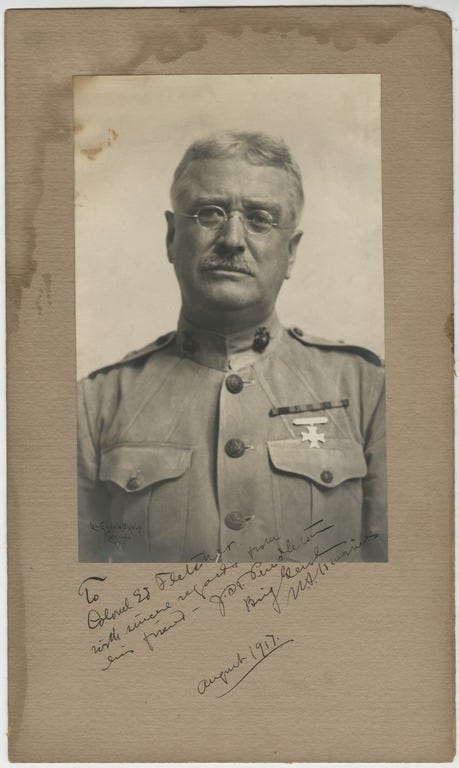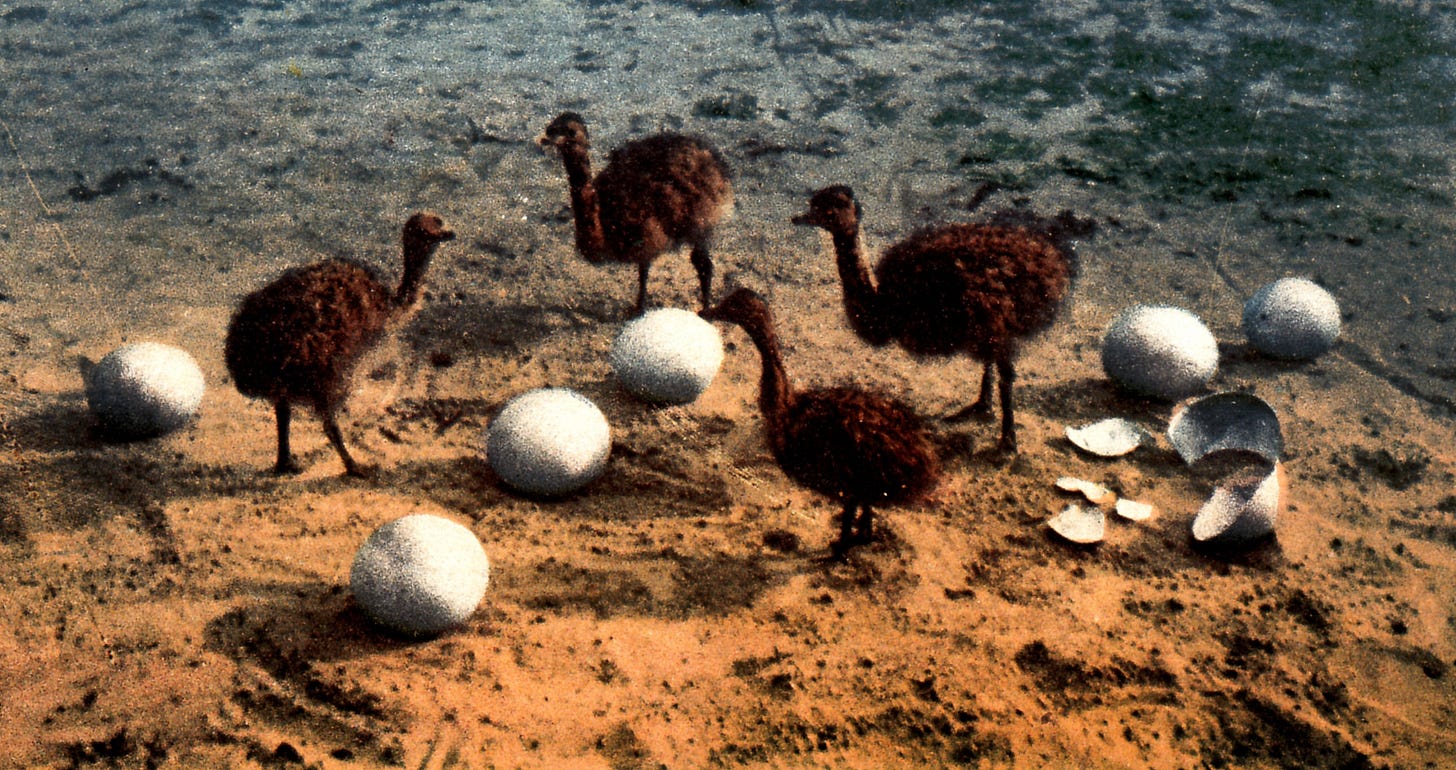April 1, 1954
Parking spaces on Isabella Avenue between Orange and Flora avenues were approved by the City Council. The plan called for a divided street with parking down the center and included 24 parking meters. Orange Avenue merchants had requested the action to provide better parking options in the downtown area.

April 2, 1942
The new Marine Corps training area on Rancho Margarita y Las Flores by Oceanside was named Camp Joseph H. Pendleton, in honor of the major general, one of the most highly respected officers in Marine Corps history. The huge holding was one of the last remaining Spanish grants. Pendleton was affectionately known as “Uncle Joe” in Coronado, where he made his home following his retirement. He served as Coronado’s mayor from 1928 to 1930, and at other times as city councilman and as a member of the school board. He died on Feb. 4, 1942, in his Coronado home at the age of 81.
April 3, 1941
President Roosevelt signed a bill that included $3,876,000 for dredging a seaplane basin south of Coronado along the Silver Strand. The 3,000-acre area on the bay would be dredged to a depth of 10 feet. The northern end of the basin reached to the south city limits of Coronado. The dredging material was used to reclaim 110 acres of land along the Strand. The rest of the it was pumped across the Strand to the ocean side and deposited on the beach.
April 6, 1944
The first 50 families of civilian war workers employed at North Island moved into their new quarters in the federal housing project at the northeast corner of the city, which would eventually house 800 families. The furnished units included one- and two-bedroom apartments. Kitchens were equipped with an oil cook stove, refrigerator and sink for dishes and another for laundry. The family units were built four to a building. Additionally, there were dormitories to house 250 women war workers and a community building with a barber shop, notion counter, soda fountain and a beauty shop. Plans also called for a cafeteria, a grocery and meat market, and a nursery school. A new street called Mullinix Drive was built around the bay side, named in honor of the late Adm. Henry M. Mullinix, who was lost at sea in the Battle of the Gilberts and who once had a home at the site.
April 9, 1889
Ostrich farming in Coronado as a successful and profitable industry was looking hopeful when three chicks hatched, followed by several others, bringing the ostrich population of Coronado to 41. J. R. Campbell, proprietor of Coronado’s ostrich farm, predicted that California would be able to supply the whole country with ostrich feathers within a couple of years. The value of the feathers imported into the United States was nearly $10 million.
April 9, 1959
New, elevated street signs were approved to replace the curb markers around Coronado. The new marker was a white embossed, baked enamel sign with black numerals. Besides the street name, each sign had numerals and an arrow designating the block number. Cement curb markers were criticized as difficult to find and read, especially at night.
April 12, 1956
Naval Air Station North Island announced that 54 planes would be offered for sale on a sealed bid basis. Officers and enlisted personnel of the armed forces on active duty or civilian employees of the military department, including the Department of Defense, or their immediate families and dependents could not bid on the planes.

April 16, 1936
Col. Ira C. Copley purchased the Japanese Tea Garden adjoining the palatial Copley home (formerly the Spreckels Mansion, now Glorietta Bay Inn). The property, 1.18 acres bounded by Orange Avenue, Glorietta Boulevard, Adella Avenue and Ynez Place, was purchased from the Spreckels Companies. The plot has been leased for 25 years to George T. Marsh, noted dealer in ornamental shrubs, antiques and imported wares, who brought trees, shrubs, and buildings from Japan for the property. It contained some of the rarest horticultural specimens found on the West Coast.
April 17, 1941
A milkman jumped out of his truck to make his delivery at 615 B Ave. and noticed something moving in the bushes by the walkway. After taking a closer look, he realized he was looking at a young sea lion. He called the police to report his find. Although the police were a bit skeptical, two officers arrived to assess the situation. They made inquiries in the neighborhood, but no one claimed or admitted ownership. The officers then secured the sea lion with a rope and led it to their car. The animal followed happily and flopped itself onto the back seat for a ride to the dog pound. Later in the evening, the sea lion was taken to the bay and released.
April 19, 1926
The Rotary Club of Coronado received its charter to be an official club in Coronado during a celebration at San Diego Yacht Club (which was in Coronado at the time). The new charter was presented by District Gov. Tom Bridges of Oakland with 30 Rotarians from San Diego and other clubs in the county in attendance. The new Rotary Club was officially welcomed to Coronado by Dr. Humphrey J. Stewart on behalf of the city’s trustees.
April 24, 1929
The new $300,000 diesel-electric ferry boat Coronado, which had arrived from Oakland the prior week, made its first cruise around San Diego Bay, starting and finishing on the Coronado side. An Army plane circled over the new craft and dropped many blossoms onto its decks, accompanied by a letter of congratulation from the San Diego Chamber of Commerce. During the voyage, all the visitors were free to inspect the ship. The Coronado had a maximum capacity of 62 cars.
April 28,1949
Mayor George F. Neal accepted a revocable permit from the federal government for 36 acres of Navy land on North Beach to be used for recreational purposes by the city. The property included 1,000 feet of ocean frontage immediately north of the city boundary and ran to an approximate depth of 1,200 feet. The permit was considered a step toward securing permanent title to the tract, under terms of a pending land trade with the Navy for Coronado’s rights in the old Spanish Bight.
April 30, 1959
The U.S. Navy announced that beginning May 1, Navy and Marine Corps personnel must wear civilian clothes on all visits to Mexico. Previously, civilian clothes were only required when traveling into the interior of Mexico. According to the Navy, the new regulations simplified instructions for personnel, afloat or ashore, visiting Mexico.






